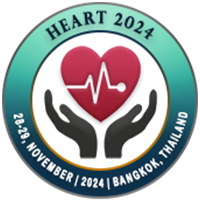
Ashraf Hamdan
Rabin Medical Center, IsraelTitle: CMR Imaging Findings in COVID-19 Vaccine Associated Myocarditis Compared with Classical Myocarditis
Abstract
Background: Myocarditis has been reported following coronavirus disease 2019 (COVID-19) vaccination; however, studies comparing vaccine associated and classical myocarditis (CM) are lacking.
Objectives: To compare cardiac magnetic resonance (CMR) imaging findings between patients with messenger RNA (mRNA) COVID-19 post vaccination myocarditis (PVM) and CM.
Methods: Thirty-one consecutive patients with clinically adjudicated PVM and 46 patients with CM underwent CMR scan during the study period.
Results: Patients’ mean age was similar in both groups (35±15, 29.2±8.7 years; respectively, p=0.21. Males were predominantly involved (81% vs. 89%; respectively, p=0.330). Patients with PVM had significantly lower T1 values compared with CM (1064.2±67.0 ms vs. 1081.6±41.9 ms; respectively, p=0.032), although T2 and ECV values were similar in both groups. Left ventricular ejection fraction and late gadolinium enhancement (LGE), were similar in both groups even after controlling for age, sex, and time interval between symptom onset and CMR scan. The most frequent location of LGE in both groups was the basal inferolateral wall. PVM demonstrated more likely a mid-wall LGE pattern of (16/31, 55.2%), while CM demonstrated a subepicardial LGE pattern (26/46, 60%), p=0.021. Compared with CM, patients with PVM are significantly more likely to demonstrate a mild pericardial effusion (13/31 vs. 8/46, respectively; p=0.018) and pericardial LGE (12/31 vs. 6/46, respectively; p=0.009). During short-term follow-up there were no deaths or heart failure hospitalizations in either group.
Conclusions: Our study shows similar CMR imaging findings and short-term outcomes in PVM and CM, although PVM was associated with milder myocardial abnormalities and more frequent pericardial involvement
Biography
TBA soon...

